Introduction to Car Safety and Security Systems

Car safety and security systems are essential features in modern automobiles, prioritizing the well-being and protection of both the driver and passengers. These systems have seen significant advancements over the years, offering a range of passive and active safety features to prevent accidents and minimize the impact of collisions. Additionally, security systems play a crucial role in deterring theft and recovering stolen vehicles. Understanding these systems is crucial for staying updated with the latest technologies and ensuring a safe driving experience.
Importance of car safety and security
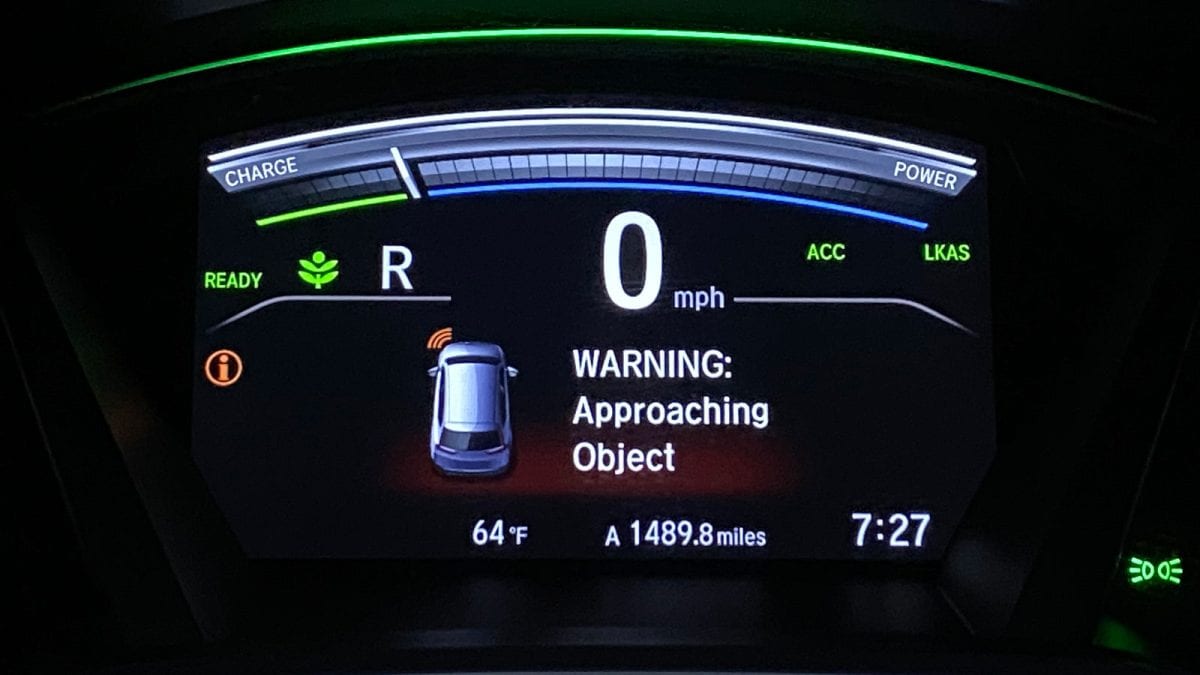
Car safety and security are of utmost importance as they prioritize the well-being and protection of both the driver and passengers. These systems play a vital role in preventing accidents, reducing injuries, and deterring theft. Staying updated with the latest technologies and advancements in car safety and security is crucial for ensuring a safe driving experience and protecting valuable assets.
Evolution of car safety and security systems

Over the years, car safety and security systems have undergone significant advancements to enhance protection and prevent accidents. From the introduction of seatbelts and airbags as fundamental features to the development of pre-crash systems and crumple zones, the evolution of passive safety systems has played a crucial role. The introduction of active safety systems like Anti-lock Braking System (ABS) and Electronic Stability Control (ESC) further contributed to accident prevention. Security systems such as car alarms and immobilizers have provided a deterrent against theft, while GPS tracking systems have improved the chances of locating and recovering stolen vehicles. The development of advanced safety technologies like Adaptive Cruise Control (ACC) and Automatic Emergency Braking (AEB) has increased vehicle driving assistance, while Blind Spot Detection and Rear-View Cameras have enhanced visibility and reduced the risk of accidents. Staying updated with these advancements is essential for ensuring a safe driving experience and protecting valuable assets.
Passive Safety Systems

Passive safety systems in cars are designed to protect occupants in the event of a crash. Key features include seatbelts and airbags, which are considered fundamental safety features. These systems work to minimize the impact and forces experienced by occupants during a collision. Additionally, advanced passive safety systems such as pre-crash systems and crumple zones are designed to further enhance protection by reducing the severity of the impact. These systems have significantly contributed to reducing injuries and fatalities in car accidents.
Seatbelts and airbags: Fundamental features

Seatbelts and airbags are fundamental safety features in cars that play a crucial role in protecting occupants during a crash. Seatbelts keep passengers securely in their seats, preventing ejection and reducing the risk of serious injuries. Airbags, on the other hand, deploy rapidly upon impact to provide a cushioning effect and reduce the force of impact on the occupants. These features are designed to minimize injuries and save lives in the event of a collision.
Advanced passive safety systems: Pre-crash systems and crumple zones

Advanced passive safety systems, such as pre-crash systems and crumple zones, are crucial in minimizing the impact of a collision. Pre-crash systems use sensors and cameras to detect potential collisions and activate safety features, such as tightening seatbelts and adjusting suspension. Crumple zones, located at the front and rear of a vehicle, are designed to absorb and distribute the energy of a crash, reducing the force transferred to the occupants. These systems work together to enhance occupant protection and prevent injuries in the event of a collision.
Active Safety Systems
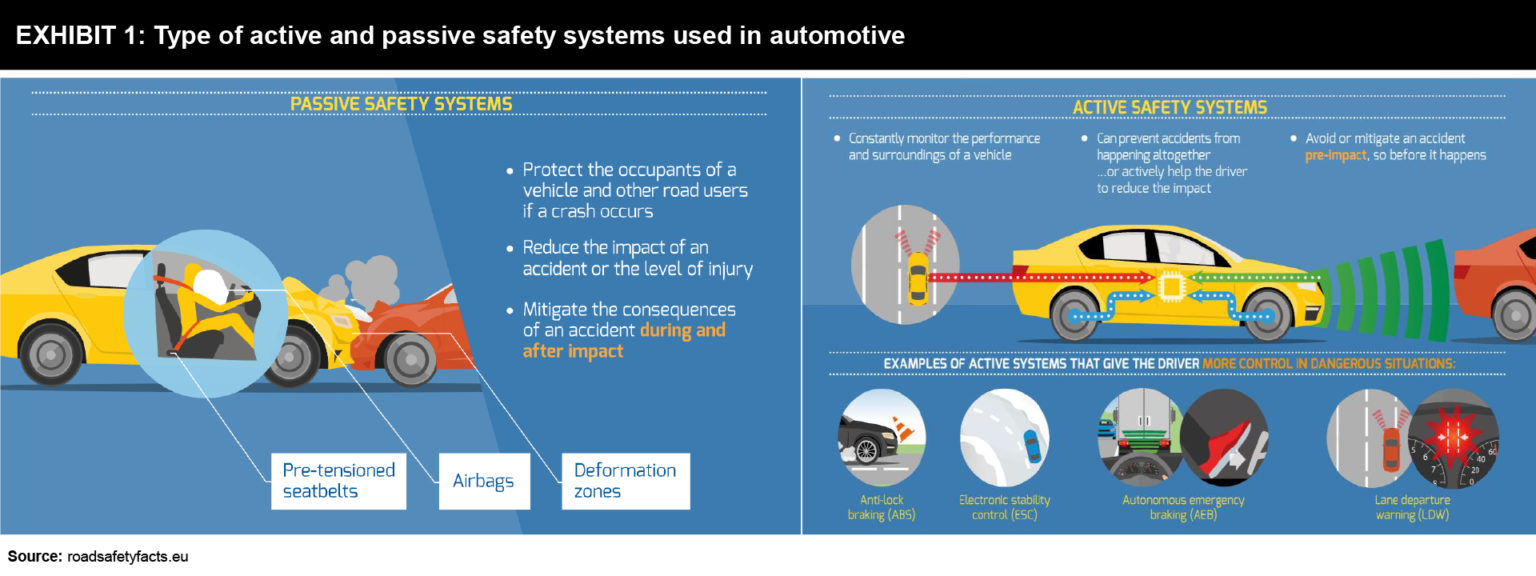
Active Safety Systems play a crucial role in preventing accidents and enhancing driver control. The Anti-lock Braking System (ABS) allows drivers to maintain steering control while braking, reducing the risk of skidding. Electronic Stability Control (ESC) helps prevent loss of control and rollovers by automatically applying brakes to individual wheels. Lane Departure Warning and Forward Collision Warning systems assist drivers in staying in their lanes and avoiding potential collisions. These advanced systems rely on sensors and cameras to detect potential dangers and provide timely alerts to the driver, improving overall road safety.
Anti-lock Braking System (ABS) and Electronic Stability Control (ESC)
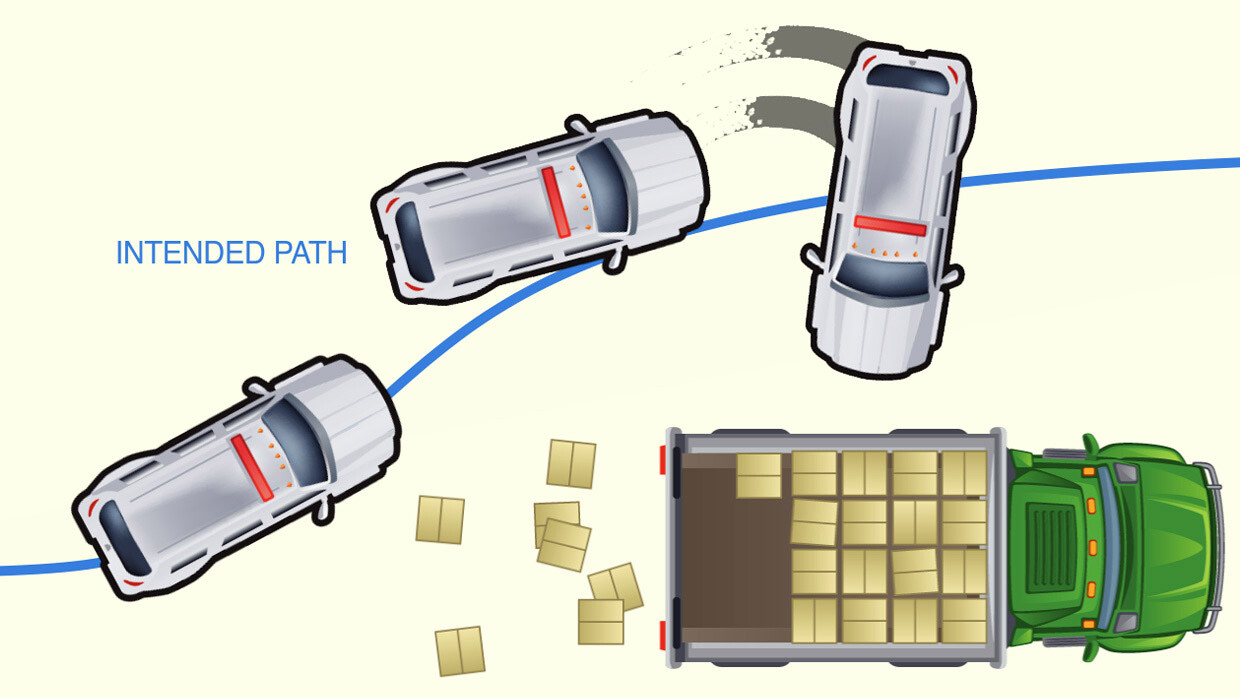
The Anti-lock Braking System (ABS) and Electronic Stability Control (ESC) are key active safety systems in modern vehicles. ABS allows drivers to maintain steering control while braking, preventing wheels from locking up and reducing the risk of skidding. ESC helps prevent loss of control and rollovers by automatically applying brakes to individual wheels. These systems rely on sensors and advanced algorithms to enhance driver control and maintain stability on the road.
Lane Departure Warning and Forward Collision Warning systems

Lane Departure Warning (LDW) and Forward Collision Warning (FCW) systems are important active safety features in vehicles. LDW uses video sensors to detect lane markings and alerts the driver if the vehicle unintentionally drifts out of its lane. FCW uses radar or cameras to monitor the distance between the vehicle and other vehicles or objects ahead, providing visual or audible warnings if a potential collision is detected. These systems help drivers maintain lane discipline and avoid rear-end collisions.
Security Systems

Car alarms and immobilizers are essential security features that act as a deterrent against theft. Car alarms are designed to sound an audible alarm when unauthorized access is detected, while immobilizers prevent the engine from starting without the correct key or code. These systems provide an added layer of protection for vehicles, keeping them safe from potential theft and unauthorized use.
Car alarms and immobilizers: Deterrent against theft

Car alarms and immobilizers are essential security features of modern cars that serve as a strong deterrent against theft. When unauthorized access is detected, car alarms sound an audible alarm, alerting both the vehicle owner and those nearby. Immobilizers, on the other hand, prevent the engine from starting without the correct key or code. These systems provide an added layer of protection for vehicles and greatly reduce the risk of theft and unauthorized use. It is important for car owners to prioritize the installation and maintenance of these security systems to ensure the safety of their vehicles.
GPS tracking systems: Locating and recovering stolen vehicles
GPS tracking systems are a crucial component of car security. These systems use satellite technology to constantly monitor and track the location of a vehicle. In the event of theft, GPS tracking systems can provide real-time updates on the vehicle's whereabouts, enabling law enforcement to quickly locate and recover the stolen vehicle. This enhances the chances of recovering the vehicle and apprehending the criminals responsible.
Advanced Safety Technologies

Advanced safety technologies are innovative features that further enhance the safety of vehicles on the road. Adaptive Cruise Control (ACC) adjusts the vehicle's speed to maintain a safe distance from the vehicle ahead, while Automatic Emergency Braking (AEB) applies the brakes to prevent or mitigate collisions. Blind Spot Detection alerts drivers of vehicles in their blind spots, and Rear-View Cameras provide a clear view of the rear surroundings. These technologies contribute to reducing accidents and improving overall road safety.
Adaptive Cruise Control (ACC) and Automatic Emergency Braking (AEB)
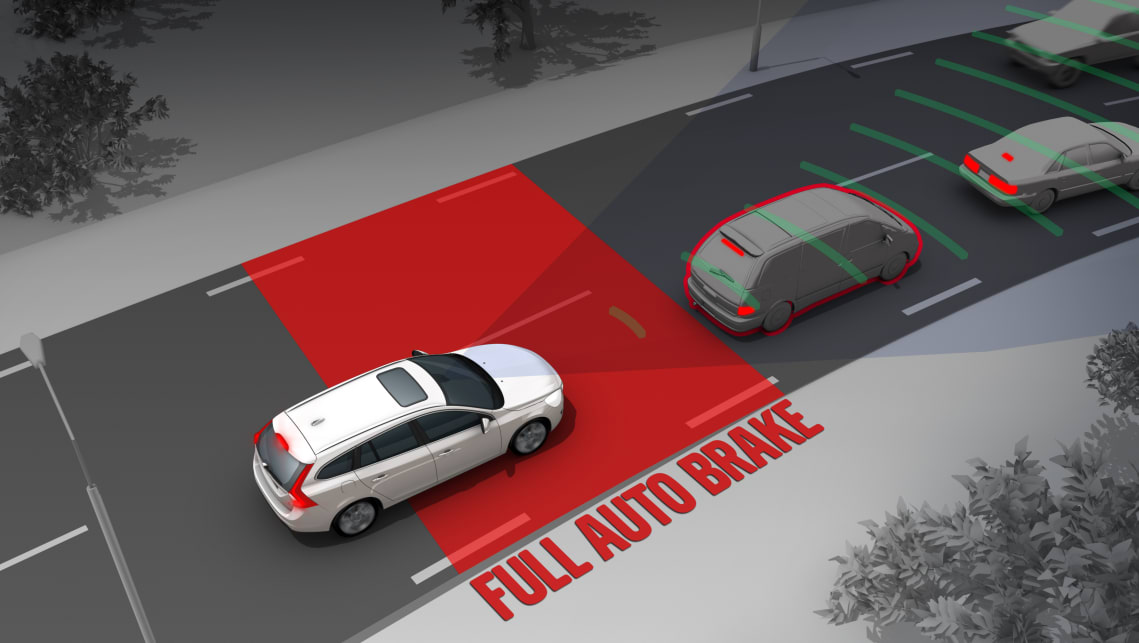
Adaptive Cruise Control (ACC) and Automatic Emergency Braking (AEB) are advanced safety technologies that enhance the driving experience and reduce the risk of collisions. ACC adjusts the vehicle's speed to maintain a safe distance from the vehicle ahead, while AEB automatically applies the brakes to prevent or mitigate collisions. By continuously monitoring the road and the vehicle's surroundings, ACC and AEB provide an extra layer of protection and help drivers stay safe on the road.
Blind Spot Detection and Rear-View Cameras
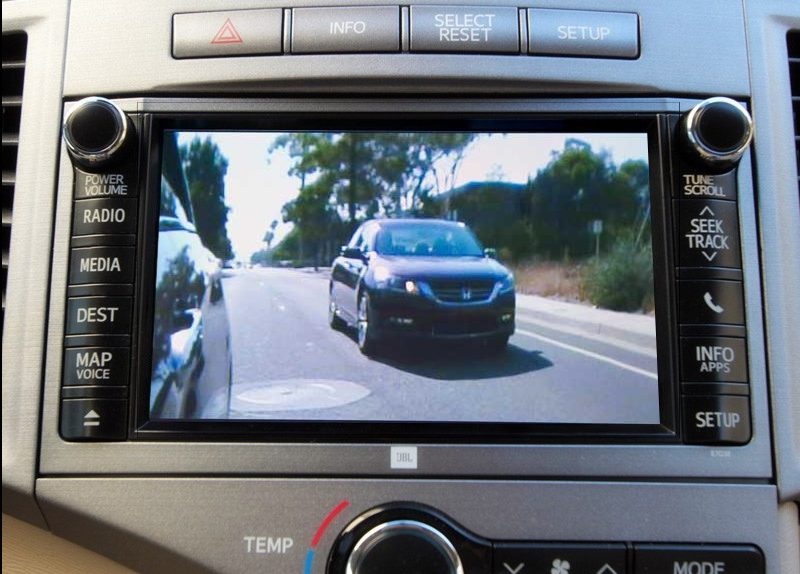
Blind Spot Detection (BSD) and Rear-View Cameras are advanced safety technologies that assist drivers in avoiding accidents and navigating their environment effectively. BSD uses sensors to detect vehicles in the blind spot and alerts the driver through visual or auditory cues. Rear-View Cameras provide a live video feed of the area behind the vehicle, helping drivers to spot obstacles and pedestrians. These technologies greatly enhance visibility and minimize the risk of collisions while changing lanes or reversing.
Conclusion

In conclusion, understanding car safety and security systems is of utmost importance for drivers in order to ensure the safety of themselves and others on the road. With the continuous evolution of technology, it is essential to stay updated with the latest advancements in order to take full advantage of the advanced safety features available. By incorporating these systems, drivers can greatly reduce the risk of accidents and theft, making the roads safer for everyone. Stay informed and prioritize safety in your vehicle.
Importance of staying updated with car safety and security systems

Staying updated with car safety and security systems is crucial for drivers to ensure the utmost protection on the road. With advancements in technology, newer safety features are constantly being introduced. By staying informed and incorporating these advancements, drivers can greatly reduce the risk of accidents and theft. Prioritizing the regular maintenance and upgrades of these systems ensures that they function optimally and provide maximum safety. Keeping up with the latest developments in car safety and security is essential for every responsible driver.
Summary of key points and future advancements

In conclusion, staying updated with car safety and security systems is paramount for every responsible driver. By incorporating advanced safety features like seatbelts, airbags, ABS, ESC, and GPS tracking, drivers can enhance their protection on the road and deter theft. Future advancements in car safety and security may include autonomous driving technology and connected car systems. It is essential for drivers to stay informed and embrace these advancements to ensure maximum safety and security.